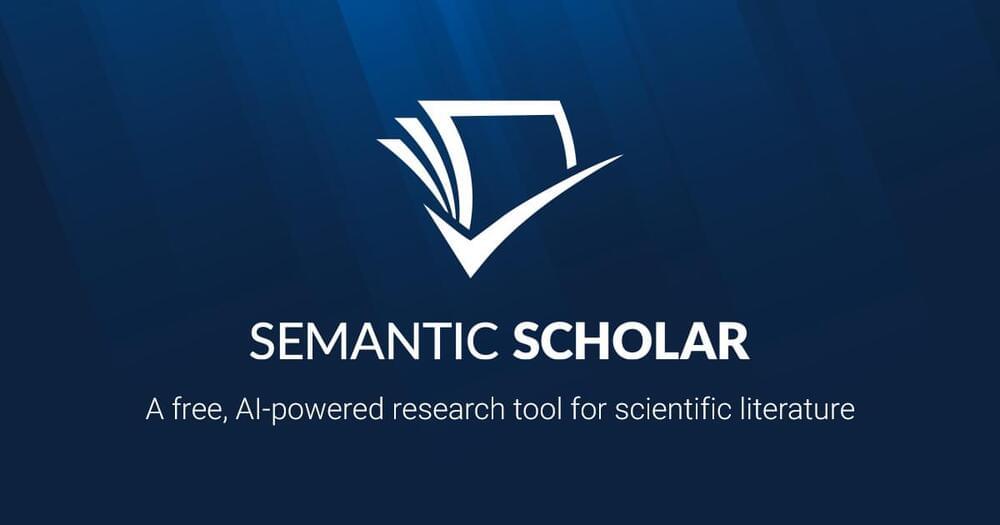OpenAI’s CEO and co-founder, Sam Altman, has revealed that the business is not currently training GPT-5, the technology behind artificial intelligence (AI) chatbot sensation ChatGPT.



In order to prevent the potentially destructive impact of AI on humanity, we need open-source innovation and collective governance that is possible through blockchain protocols and Web3, rather than the monopoly defaulting structure of Web2, according to Michael Casey, CoinDesk’s chief content officer.

Join top executives in San Francisco on July 11–12, to hear how leaders are integrating and optimizing AI investments for success. Learn More
Artificial intelligence (AI) is revolutionizing industries, streamlining processes, and, hopefully, on its way to improving the quality of life for people around the world — all very exciting news. That said, with the increasing influence of AI systems, it’s crucial to ensure that these technologies are developed and implemented responsibly.
Responsible AI is not just about adhering to regulations and ethical guidelines; it is the key to creating more accurate and effective AI models.
The Singularity is a technological event horizon beyond which we cannot see – a moment in future history when exponential progress makes the impossible possible. This video discusses the concept of the Singularity, related technologies including AI, synthetic biology, cybernetics and quantum computing, and their potential implications.
My previous video “AI, Robots & the Future” is here:
https://www.youtube.com/watch?v=iaGIo_Viazs.
The episode on “The Metaverse: A Facebook Fantasy?” is here:
And I have a video on “Nanotechnology 2.0” here:
https://www.youtube.com/watch?v=X14sRtcHJXs.
Links to websites shown in the video are as follows:
Amyris (synthetic biology pioneer):
Visit http://TED.com to get our entire library of TED Talks, transcripts, translations, personalized Talk recommendations and more.
The cells in your body are like computer software: they’re “programmed” to carry out specific functions at specific times. If we can better understand this process, we could unlock the ability to reprogram cells ourselves, says computational biologist Sara-Jane Dunn. In a talk from the cutting-edge of science, she explains how her team is studying embryonic stem cells to gain a new understanding of the biological programs that power life — and develop “living software” that could transform medicine, agriculture and energy.
Get TED Talks recommended just for you!
The TED Talks channel features the best talks and performances from the TED Conference, where the world’s leading thinkers and doers give the talk of their lives in 18 minutes (or less). Look for talks on Technology, Entertainment and Design — plus science, business, global issues, the arts and more. You’re welcome to link to or embed these videos, forward them to others and share these ideas with people you know. For more information on using TED for commercial purposes (e.g. employee learning, in a film or online course), submit a Media Request here: http://media-requests.TED.com.
Follow TED on Twitter: http://twitter.com/TEDTalks.
Like TED on Facebook: http://facebook.com/TED

Human decision-making is relevant for concept formation and cognitive illusions. Cognitive illusions can be explained by quantum probability, while the reason for introducing quantum mechanics is based on ad hoc bounded rationality (BR). Concept formation can be explained in a set-theoretic way, although such explanations have not been extended to cognitive illusions. We naturally expand the idea of BR to incomplete BR and introduce the key notion of nonlocality in cognition without any attempts on quantum theory. We define incomplete bounded rationality and nonlocality as a binary relation, construct a lattice from the relation by using a rough-set technique, and define probability in concept formation. By using probability defined in concept formation, we describe various cognitive illusions, such as the guppy effect, conjunction fallacy, order effect, and so on.

One evening, some 40 years ago, I got lost in time. I was at a performance of Schubert’s String Quintet in C major. During the second movement I had the unnerving feeling that time was literally grinding to a halt. The sensation was powerful, visceral, overwhelming. It was a life-changing moment, or, as it felt at the time, a life-changing eon.
It has been my goal ever since to compose music that usurps the perceived flow of time and commandeers the sense of how time passes. Although I’ve learned to manipulate subjective time, I still stand in awe of Schubert’s unparalleled power. Nearly two centuries ago, the composer anticipated the neurological underpinnings of time perception that science has underscored in the past few decades.
The human brain, we have learned, adjusts and recalibrates temporal perception. Our ability to encode and decode sequential information, to integrate and segregate simultaneous signals, is fundamental to human survival. It allows us to find our place in, and navigate, our physical world. But music also demonstrates that time perception is inherently subjective—and an integral part of our lives. “For the time element in music is single,” wrote Thomas Mann in his novel, The Magic Mountain. “Into a section of mortal time music pours itself, thereby inexpressibly enhancing and ennobling what it fills.”
Do you like our content? Please support PRO Robots on Patreon.
—
https://www.patreon.com/PRORobots.
—
Your contributions will help us to create better content and to improve our service for you and our PRO Robots community. Every dollar counts and will help us keep working for you.
Thank you for your support!
—
👉For business inquiries: [email protected].
✅ Instagram: https://www.instagram.com/pro_robots.
Do you know why humanity still doesn’t have colonies on the Moon or Mars? Because the big companies that might’ve invested their money in building the said colonies are not sure when they’ll get their investments back and start making a solid profit. Well, at least that’s one of the reasons.
But the cheaper space flights will get and further the technologies that can help cost-efficiently settle on other planets will develop, the more countries, billionaires, tech giants, startups and institutions will get into the space race, whose finish line is right on the Red Planet. Why are they reluctant to do this? Are they afraid of future cataclysms? Do they know something we don’t? Are they dreaming of claiming the title of pioneers? Or hoping to mine rare metals in the asteroid belt?
Watch this video to find out all about the whens and hows of life on Mars, as well as about its outcomes, including a new round of human evolution and the possible demise of the planet itself! Wheels up!
00:00 In this video.
01:00 Mars will try to kill you.
01:30 Mars is a totally hostile environment for human life.
02:25 With Mars, Earthlings have a better chance.
04:01 What have we already found on the Red Planet?
05:22 Ilon Musk.
06:04 Prolonged flight exposes people to the greatest horror.
07:45 development of new super-powered engines.
08:24 an inflatable heat shield for astronauts to land on the planet.
09:12 Mars has no planetary magnetic field.
10:27 But the astronauts won’t spend all their time in spacesuits.
12:23 What about food on Mars?
13:30 a new round of human evolution on mars.
#prorobots #robots #robot #futuretechnologies #robotics.
Join us on Patreon! https://www.patreon.com/MichaelLustgartenPhD
Discount Links:
NAD+ Quantification: https://www.jinfiniti.com/intracellular-nad-test/
Use Code: ConquerAging At Checkout.
Green Tea: https://www.ochaandco.com/?ref=conqueraging.
Oral Microbiome: https://www.bristlehealth.com/?ref=michaellustgarten.
Epigenetic Testing: Trudiagnostic.pxf.io/R55XDv.
Use Code: CONQUERAGING
At-Home Blood Testing: https://getquantify.io/mlustgarten.
Thousands of people in Ukraine have lost their limbs in the war against Russia, according to World Health Organisation estimates.
The Ukrainian charity Superhumans and the UK-based company Open Bionics have partnered to create bionic arms for the wounded.
The BBC visited the factory in Bristol, England, responsible for creating the prosthetics.
Please subscribe here: http://bit.ly/1rbfUog.
#Ukraine #BionicArm #Bristol